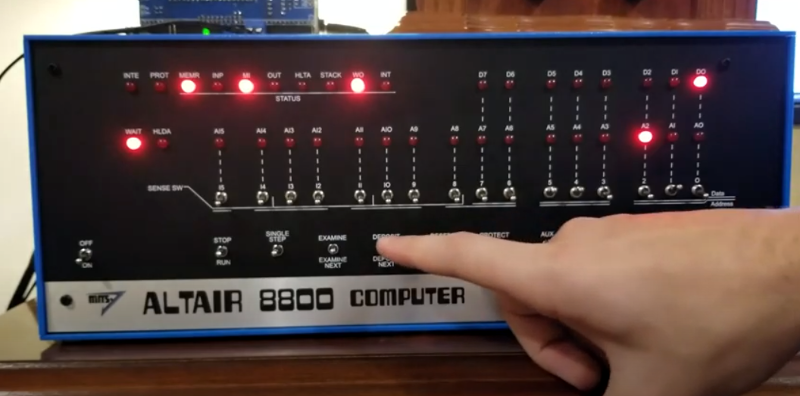We’re pretty familiar with such names as Steve Wozniak, Bill Gates, Jack Tramiel, Nolan Bushnell, and the other movers and shakers of the 1970s home computer world. But there’s one person who towered among them for a few years before cashing out and leaving the computer business to pursue the life he’d always wanted. [Gareth Edwards] for Every has a fascinating profile of Ed Roberts, the man who arguably started the home computer boom but is now an obscure figure.
Even if you’ve never heard of Ed Roberts, you’ve likely heard of the product his company brought to market. The MITS Altair 8800 was the first computer to be sold as a home computer rather than for business or scientific use, and though its toggle switch interface now seems extremely quaint, its influence on every microcomputer that followed has been immense.
As followers of the retrocomputing scene, we know about the Altair, but perhaps more interesting is the story of MITS. Formed by a group of US Air Force veterans to produce rocket telemetry equipment, it pivoted to calculators, and as that market imploded in the early 1970s, the computer was a big gamble to save it from bankruptcy. It’s one that paid off, and as someone used to seeing technological cycles of boom and bust, Ed cashed out at the peak of the first wave. He followed his long-held ambition of becoming a doctor, and when, in 2010, he was near the end of his life, the hospital caring for him was shocked to find itself being visited by Bill Gates. It’s an article about a fascinating individual well worth reading.
The Altair, meanwhile, is a project that appears quite often here at Hackaday. Here’s a recreation of one as original as possible. The Mark 8 came out a little earlier but without complete kits or assembled units, so it didn’t get the traction — or the imitators — that the Altair did.

















I think that should be [Gareth Edwards]. Easy to confuse! Feel free to delete this message after correcting, if you like.
Good catch, fixed.
I never knew about Ed Roberts and his role in the Altair 8800. Thanks for this article! Bill Gates and his “Open Letter to Hobbyists” always take the limelight.
Never heard of Ed, but always knew Bill was scum.
A MITS handheld calculator (assembled from a kit, and therefore requiring occasional whacks to keep it working)—I don’t remember exactly which model, or what functionality it had—helped get me through my college physics classes in the 1970s. At the time, no one else around me, either professors or fellow students, had ever seen a handheld calculator, so it was quite a conversation piece. Predictably, there were debates about whether I was “cheating” (especially during exams), but experiments showed that it wasn’t really all *that* much more efficient than a slide rule used skillfully, so I was allowed free rein with it.
Great story! :-)
I had one of Ed’s beautiful blue boxes, along with an RS 232 card and terminal, and 64k memory, card, plus floppy drives. It would do everything my Cromemco Z2D would do, plus gave me a beautiful light show. Unfortunately however, in 1999 I was forced to move to smaller quarters and the 8800 and the Cro had to find new homes however, I was able to keep the Commodore C128D, Atari 1040, and Amiga 1000 for awhile, and I still have the Cromemco Zero and Kaypro2, along with a Commodore EX64.
Fascinating story. You have to admire the courage to walk away when you achieved your goal. Odds are, with that attitude, he would not have lasted against competitors with lesser integrity. I grew up on machines that Ed started and still have some of them. What an amazing time and amazing guy. Thanks, Ed.